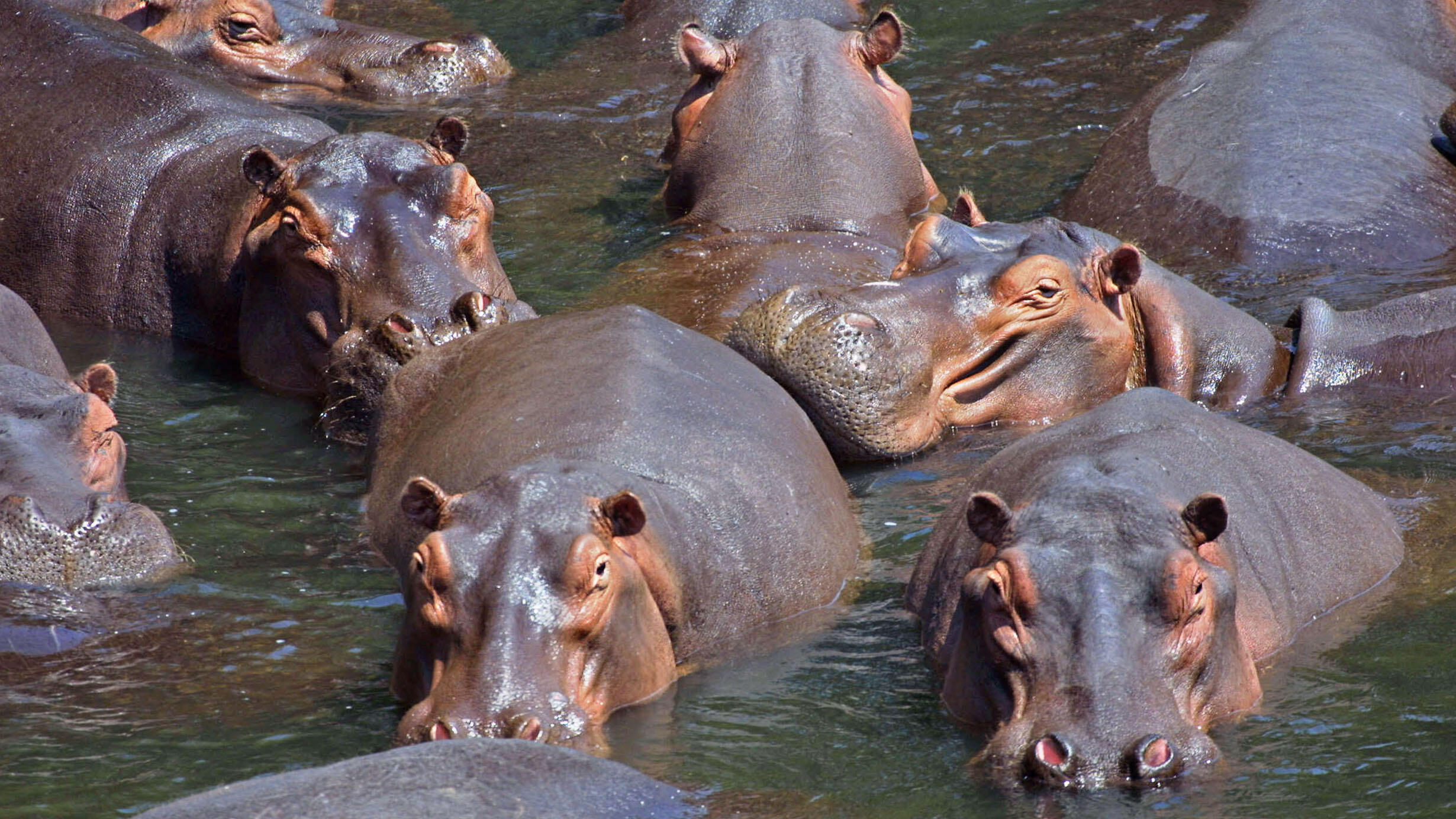 Pod of Hippos (Hippopotamus amphibius) in Luangwa Valley, Zambia.
Pod of Hippos (Hippopotamus amphibius) in Luangwa Valley, Zambia.Courtesy of P. Maritz/Wikimedia Commons
Hippos and whales may look different in many ways, but they are actually each others’ closest living relatives—sharing a common ancestor that lived about 55 million years ago.
They also share characteristics that are odd for most mammals, including smooth, nearly hairless skin that lacks glands that produce an oily substance called sebum that lubricates skin and hair for most land mammals.
Current scientific thinking is that these “aquatic” skin traits were already present in the amphibious common ancestor of hippos and cetaceans, the group that includes whales, dolphins, and porpoises. But there remains intense debate about how and when cetacean ancestors returned fully to the water.
Learn more about the ancient land mammal known as “the first whale.”
“How mammals left terra firma and became fully aquatic is one of the most fascinating evolutionary stories, perhaps rivaled only by how animals traded water for land in the first place or by the evolution of flight,” said John Gatesy, a senior research scientist in the Museum’s Division of Vertebrate Zoology and a corresponding author on a new study out today in the journal Current Biology.
The research, led by Gatesy and colleagues at the University of California, Irvine, University of California, Riverside, Max Planck Institute of Molecular Cell Biology and Genetics, and the LOEWE-Centre for Translational Biodiversity Genomics (Germany), contradicts previous assumptions.
“The simplest hypothesis is that the ancestor of whales and hippos was already amphibious, but evolution isn’t always the shortest distance between two points,” said Mark Springer, a biology professor at the University of California, Riverside, and the study’s lead author.
Carl Buell
The research suggests that relatives of the hippo were not part of the transition as mammals re-entered life in the water. Instead, the skin of whales and hippopotamuses evolved independently. The work also suggests that the last common ancestor was likely a land-dwelling mammal.
The researchers used a two-pronged approach: they compared the anatomy of hippo and cetacean skin based on histology, and they used genomic screens to compile a comprehensive list of “skin genes” that have been inactivated in both hippos and cetaceans. This was aided by examining—for the first time—the genome of the pygmy hippo, Choeropsis liberiensis, one of only two living hippo species.
In addition to finding that whales’ and hippos’ “aquatic” skin traits evolved independently, the researchers found that the gene losses in the hippo lineage happened much later than in the cetacean lineage.
The genetic findings match up with examination of the skin: Unlike whales, which completely lack sweat glands, hippos have a very specialized kind of sweat gland that produces “blood sweat,” an orange-colored substance that is thought to have natural anti-microbial and sunscreen properties.
While cetaceans only have a few whiskers, hippos are fully whiskered but also have sparse body hairs, most prominently on their ears and at the tip of their tail. The latter are used when hippos defecate: they quickly spin their tail so that the brush-like hairs help to pulverize the feces and spread it as a way to mark territory.
In addition, the epidermis is much thicker in cetaceans, but given their fully aquatic lifestyle, the skin does not act as a barrier to desiccation as in hippos, which retain a more primitive skin-type overall.